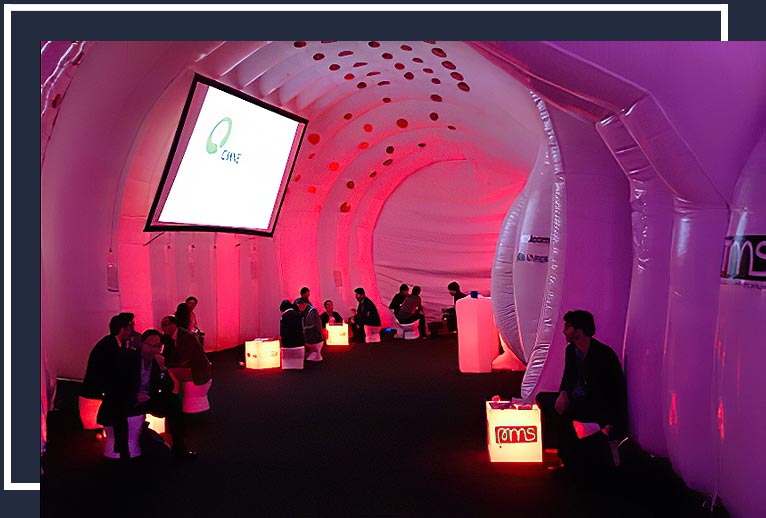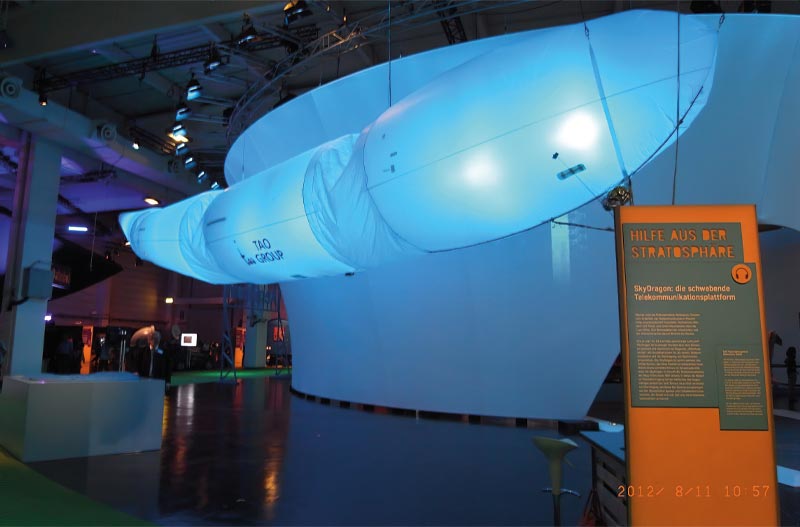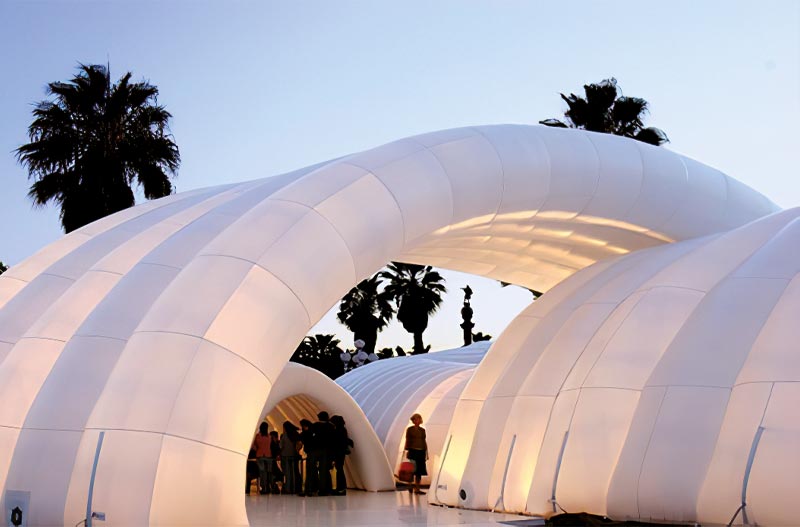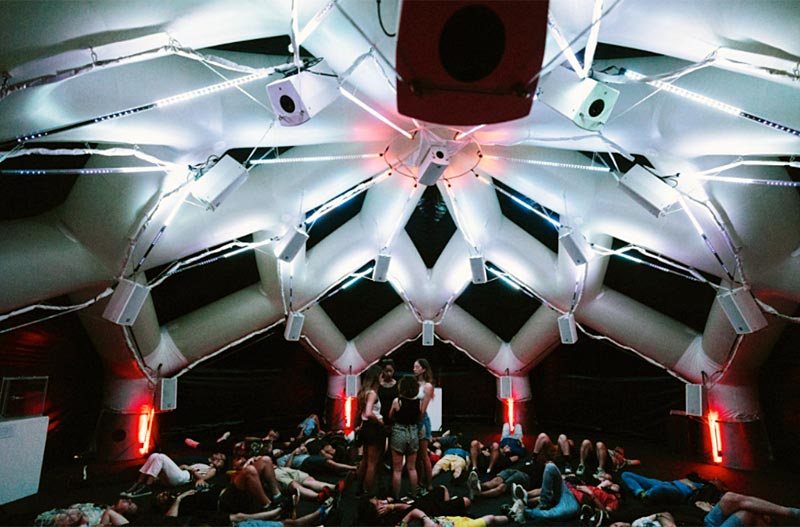Inflatable
architecture
Inflatable structures and membrane buildings are currently experiencing a revival, as they can be produced in almost any shape and are always an extravagant eye-catcher as a hangar, large-scale event space or work of art. And the durable outer shells of the pneumatic structures are now also recyclable.
These are just some of the positive features of inflatable membrane structures and the internationally renowned “inflatable structures”.
- Aesthetic
- Fast to set up
- Mobile
- Reusable
- Cost-effective
- Outdoor and indoor use
- Can be used individually at trade fairs, exhibitions or events
- Recyclable

TAO builds inflatable architecture as large halls for events (such as Zeppelin flights), as durable roof structures such as for an institute roof in Barcelona or as a large flying exhibition stand ceiling as an eye-catcher for an aerospace exhibition.
Every design of an inflatable structure is individual at TAO: and the interior fittings of the inflatable halls such as the design of the floor, ventilation, air conditioning, fire doors and special requests such as an inflatable bar or inflatable furniture can also be realized individually.
The term “inflatable architecture” or pneumatic structures can be used to describe all constructions that use membranes and low-pressure (0.2 to 4 bar) air to expand the surface area or increase the volume of manufactured, so-called hollow bodies. Stability due to internal pressure is essential for inflatable buildings and large-area air-filled roofs consisting of two or more interconnected membrane layers, usually with spars made of the same material.
The cavity formed between the layers is specifically pressurized with air, creating a rigid structural element that enables structures with large spans. This is used to create innovative buildings with large volumes such as aircraft hangars, trade fair buildings or event halls.






